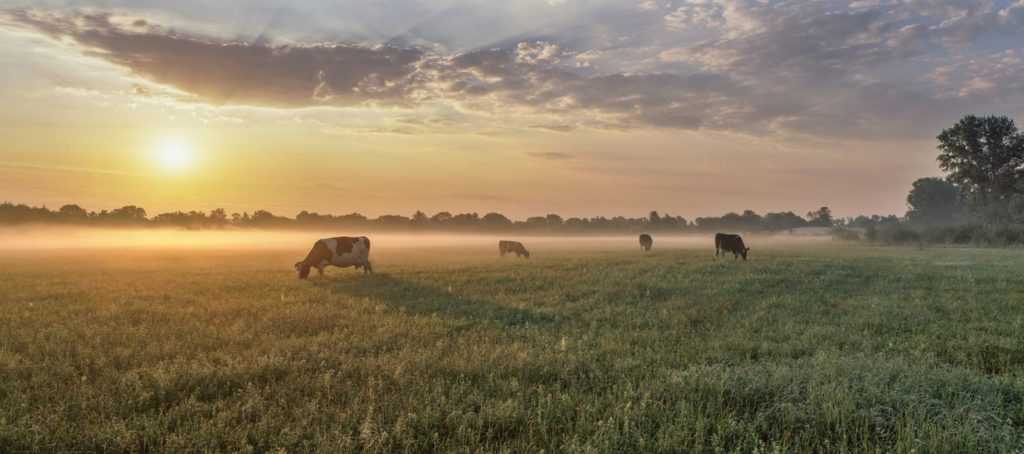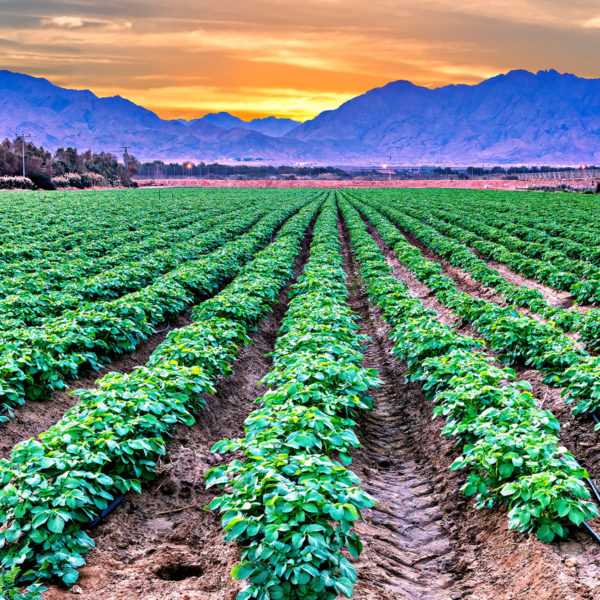Making Sustainability Sustainable: Lessons from One Family’s Farm


In most family businesses, rethinking the way your parents worked means looking to the future. In farming, planning for the future often entails revisiting the past. Fourth-generation cattleman Will Harris reshaped White Oak Pastures, his family farm in Bluffton, Georgia, by rediscovering and implementing many of the practices his great-grandfather used in the 19th century.
For Harris, the only child of an only child, being the steward of White Oak Pastures was his destiny. Not once did he consider an alternative career. Yet in 1995 he took a radical step and turned the industrialized farm over to regenerative agriculture, unlearning everything he had studied at agricultural college during the ‘70s, and adopting a humane approach. Over time, the natural action of his herds has transformed his land, enriched his soil, and slashed his farm’s carbon footprint.
Today, Harris employs about 180 people, farms or grazes around 4,200 acres of land, and supplies meat to businesses including Whole Foods Market as well as consumers across the United States. White Oak Pastures operates cabins, workshops, events, a store, and more, and Penguin Random House is set to publish Harris’ book, A Bold Return to Giving a Damn, next fall.
Theodora Sutcliffe spoke to Harris for “This Is Capitalism” about what it takes to make a business both environmentally and financially sustainable. Edited excerpts of their conversation follow.
TS: Two of your daughters and their husbands live and work on White Oak Pastures, and some of your grandchildren are growing up there too. What do you hope they will inherit?
WH: My grandchildren are still very young: number seven is on the way. And I’ve observed that, even if it’s a pretty good family business, no family business survives in perpetuity. With that said, on my watch, I’ve kept it together.
Growth, to me, is establishing a system that is perpetual and resilient throughout as much time as it’s needed. I don’t want to hand over the biggest company I possibly can to my children. I want to hand over a company that will continue to operate for their economic wellbeing for as long as there’s a need for it.
TS: When did you discover the idea of regenerative farming and how did you pursue it?
WH: When I started moving toward regenerative land management in the mid-‘90s, the term “regenerative land management” was not out there. We didn’t have the internet in Bluffton, Georgia, back then, and there weren’t a lot of guys and girls writing books and articles and blogs the way they are today.
I had no business plan or operating plan. I simply stopped doing things I didn’t like doing any more. I had a confined feedlot where I fed cattle really unnatural things, like feeds with chicken manure, plus a lot of antibiotics so they could survive and prosper on things like chicken manure, so I ceased that. I ceased to use chemical fertilizers; I ceased to use pesticides; I ceased to use tillage; I ceased to use hormone implants; I ceased to use antibiotics for growth. And when I did that, I enjoyed farming more.
TS: Was there a moment when you looked out over the pasturelands and you could see the benefits of the changes you’d made?
WH: Clearly and absolutely, yes. Even 20-plus years in, it still gets better every day. When I first started changing the way I managed the land, it was dead land, like a dirt parking lot. Industrial farming is all about pesticide, and “-cide” means “killing.”
Today, after decades of promoting life rather than killing it, the land looks completely different. You take a spade and you turn it over, and it looks like chocolate cake; my neighbor’s looks like a brick. I love the term “teeming with life,” and my land teems with life. There are species—plants and animals and insects, and I’m sure microbes too, although I can’t see them—that I haven’t seen since I was a child.
TS: Is it possible to scale a holistic farming system?
WH: Holistic farming systems are not nearly as scalable as a linear factory system. But they’re highly replicable. You shouldn’t have a White Oak Pastures that operated all over the United States, but you could have a White Oak Pastures in every agricultural county in the United States, or every two or three.
Most novices think that regenerative agriculture is about what you do in the pastures. That’s the first step, but it’s not the only step. People don’t buy pigs and cows and sheep; they buy beef and pork and lamb. Making processing monetizable is not a small thing; then there’s a huge market-access problem to get your meat to the consumer. All of a sudden, you find out that you’ve got a big, complex business.
TS: Do you think conventional financial metrics capture the success of a farm like yours?
WH: I feel the accepted metrics we use—the general accounting that you’d use in a manufacturing business or an accounting company—is not an accurate measure of what we do. As owner of the business, I’m less perturbed by a very low return on my investment.
I see a broader picture there. I see the accumulation of non-depreciating assets and assets that don’t appreciate as fast as normal assets. Improvements in the soil, the land, the herds, the infrastructure—none of these are reported on the financials.
TS: White Oak Pastures is the largest employer in Clay County, Georgia. Was that a goal back in 1995?
WH: It was never my goal, but it pleases me. I wrote checks for $5 million last year, in one of the poorest counties in Georgia. There are three things that we think we do well, and only three: land management, animal management, and rural revival. The first two were very intentional, and the third, the re-enrichment of the rural community, was absolutely organic.
Bluffton has a population of 102. It never had a railroad, never had a factory, never had a mill: it was purely agrarian and had been in decline all my life. When we changed the way we thought and brought on 180 people and paid them a little higher than the county average, all those people needed a place to eat and sleep and drink and play and shop. And when we provided this, Bluffton went from being a ghost town to a place that people come to visit in about a decade.
TS: You also have a small tourism business attached to White Oak Pastures. How important is that in your financial plan?
WH: That side of our business is not profitable; it’s a way to get our message out. Some people stay with us for a night; some for a week. The biggest nemesis that businesses like ours have is greenwashing and the best possible tool is for people to come here and see what we do.

